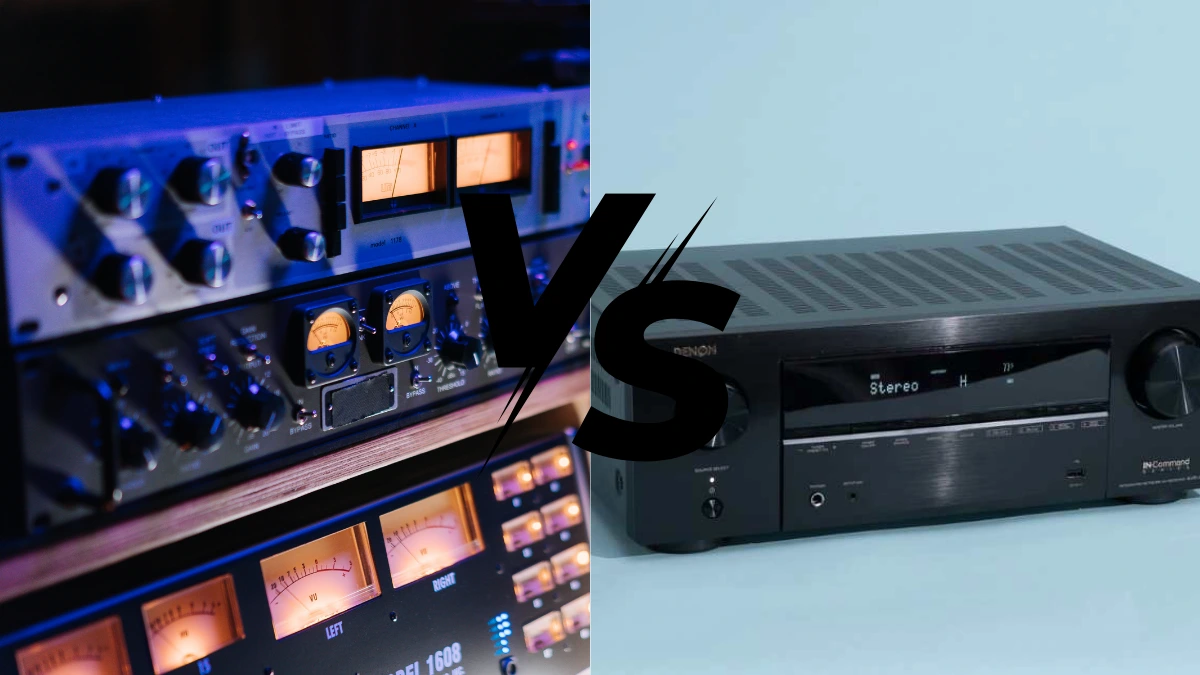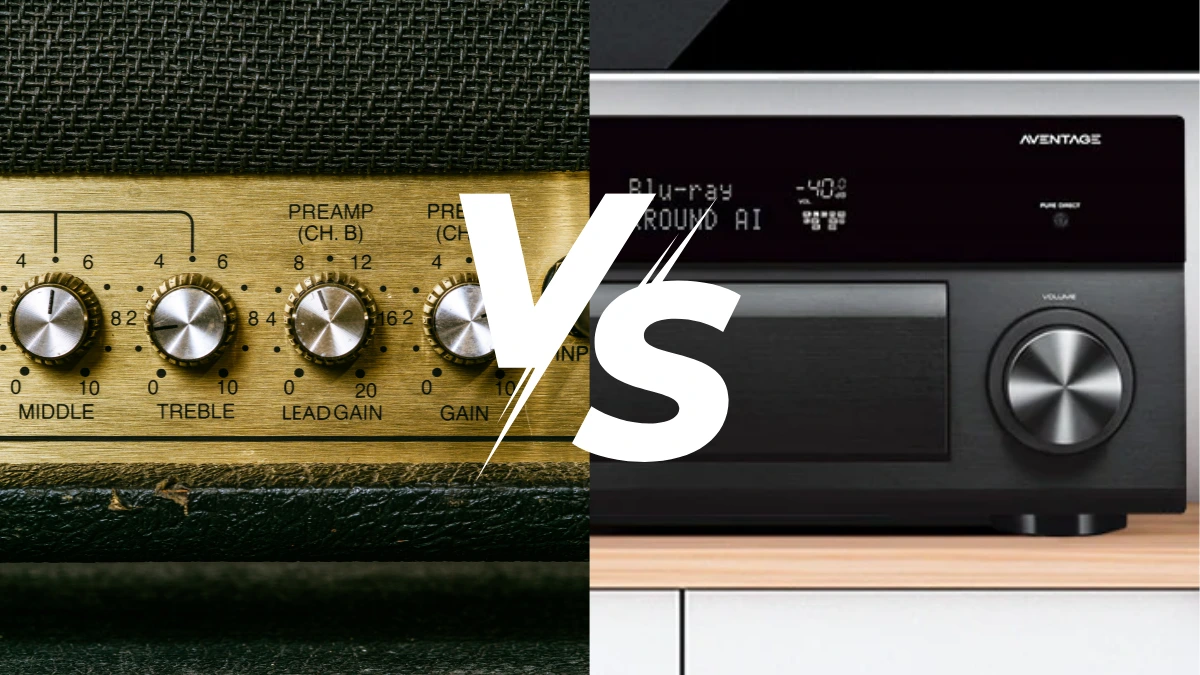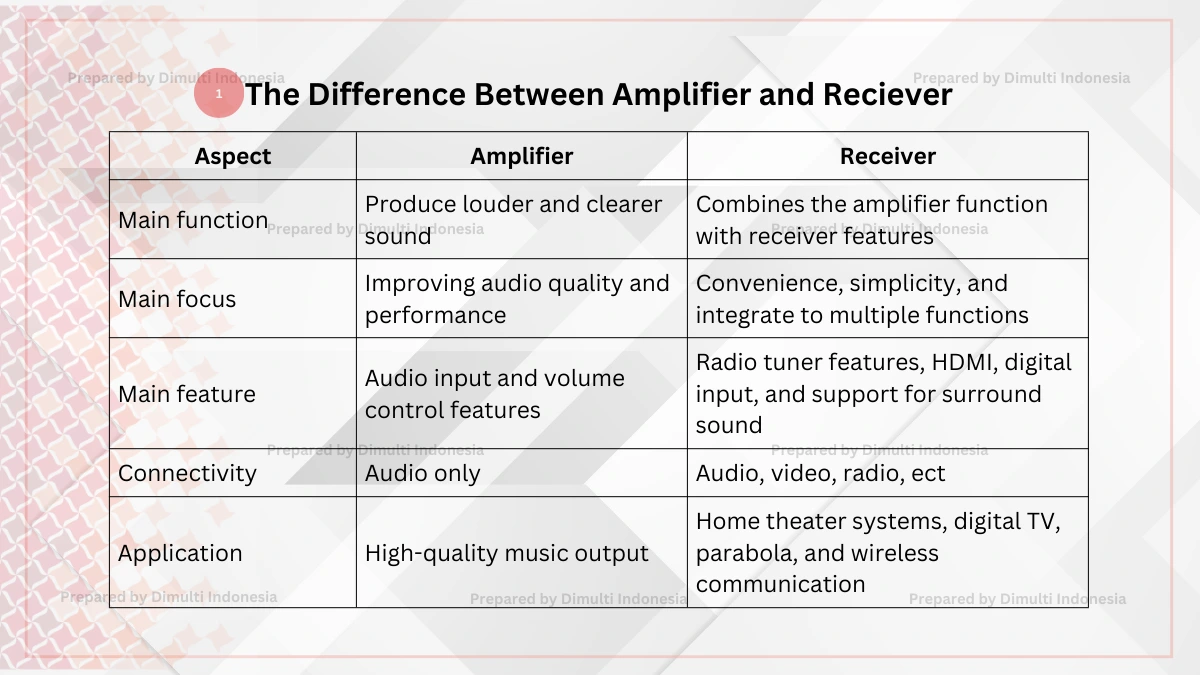An amplifier and a receiver are the keys to make a better signal or audio output. Although both maximize signal input, the amplifier and receiver have some significant differences.
The difference between amplifier and receiver includes the main function, focus, features, connectivity, and application.
This article will delve into the important differences between amplifier and receiver for indoor navigation.
What is an Amplifier?

An amplifier is an electronic device that amplifies input signals or sounds without changing their original form. Weak or small signals from sound sources, such as microphones or musical instruments, can be amplified with this device. This produces a stronger and clearer output.
The improved sound quality can then be used by speakers or other output devices. Without an amplifier, the sound signal from an audio device may be too weak to be heard clearly, or the communication signal may be disrupted before it reaches the receiver.
What is a Receiver?

A receiver is an electronic device that works to receive, detect, and process signals sent by a transmitter. This device converts the signals into a format that can be understood or used by the target.
This device is commonly used in audio systems, televisions, and telecommunications equipment. In the context of audio, for example, a receiver will receive signals from various sources such as radios, CD players, or streaming devices, which it then amplifies to play through speakers.
The Difference Between Amplifier and Receiver

An amplifier and receiver are both used to maximize signal input, but they have some differences. Here are five differences between beacon and GPS:
1. Main function
Amplifier: Amplifies the audio input signal and transmits it to the speakers to produce louder and clearer sound.
Receiver: Combines the amplifier function with receiver features to amplify input signals such as audio, video, radio, etc.
2. Main focus
Amplifier: Focuses on improving audio quality and performance.
Receiver: Focuses on convenience, simplicity, and the ability to integrate multiple functions into a single device.
3. Main feature
Amplifier: Equipped with audio input and volume control features, but does not have a radio tuner or video processing.
Receiver: Equipped with radio tuner (FM/AM) features, HDMI input for video, digital input, and support for surround sound processing for streaming services.
4. Connectivity
Amplifier: Has limited connectivity to audio only.
Receiver: Has a wider range of inputs and outputs, can be used for both audio and video.
5. Application
Amplifier: Used by users who focus on high-quality music output.
Receiver: Not only for music playback, but it can also be used for home theater systems, digital TV, parabola, and wireless communication. Suitable for simple all-in-one solutions in a single device.
That’s the difference between amplifier and receiver that you can consider when choosing according to your personal needs.
If you want good audio quality specifically for music, an amplifier is a good choice. However, if you need an all-in-one solution in a single device for audio and video, you can choose a receiver.